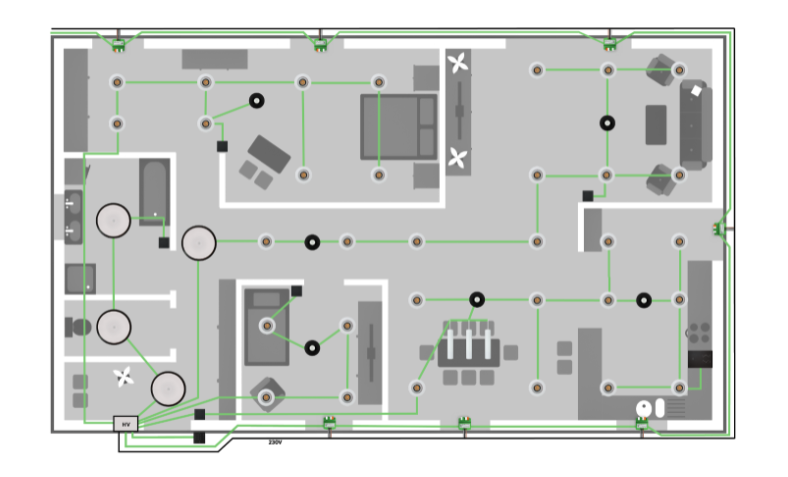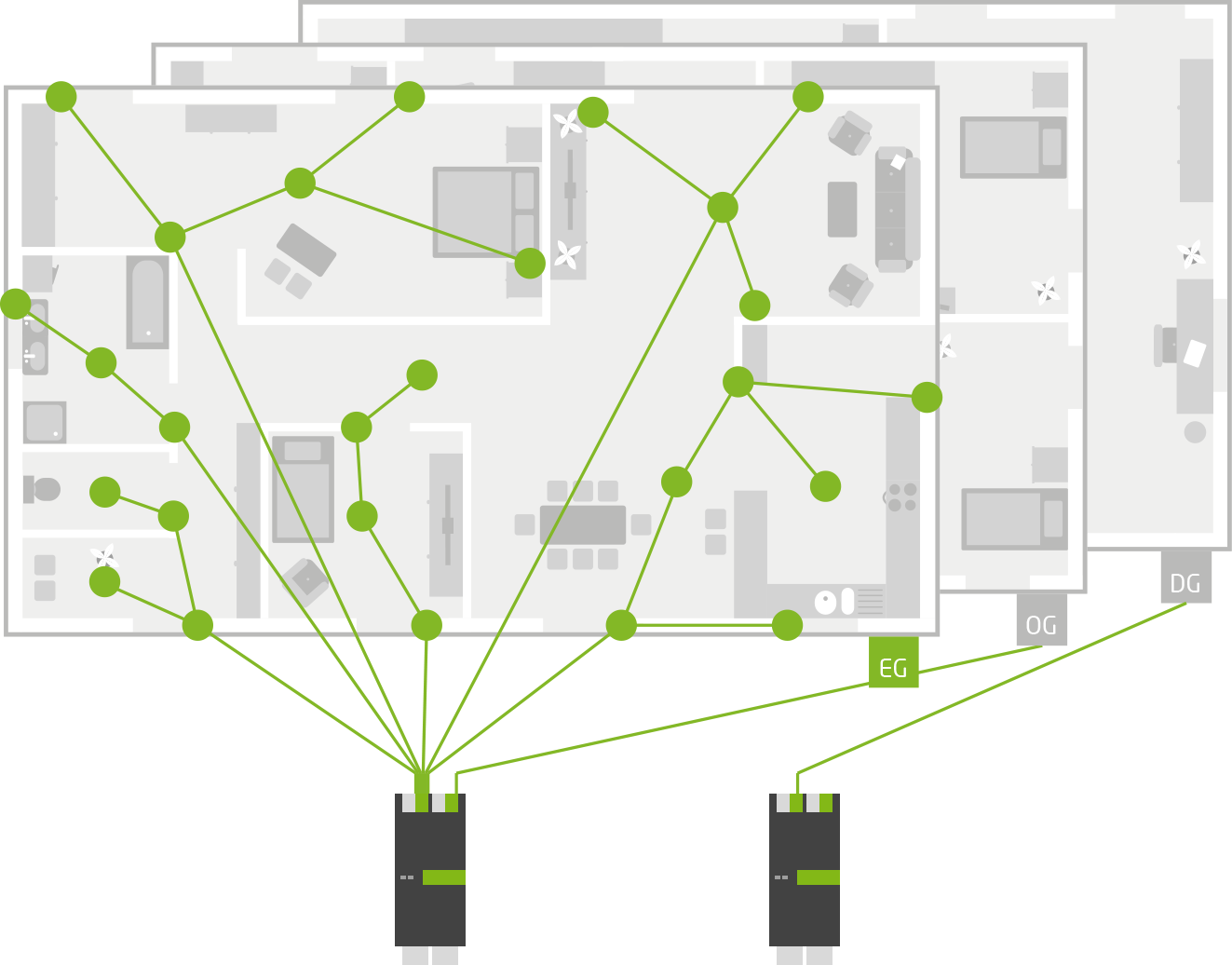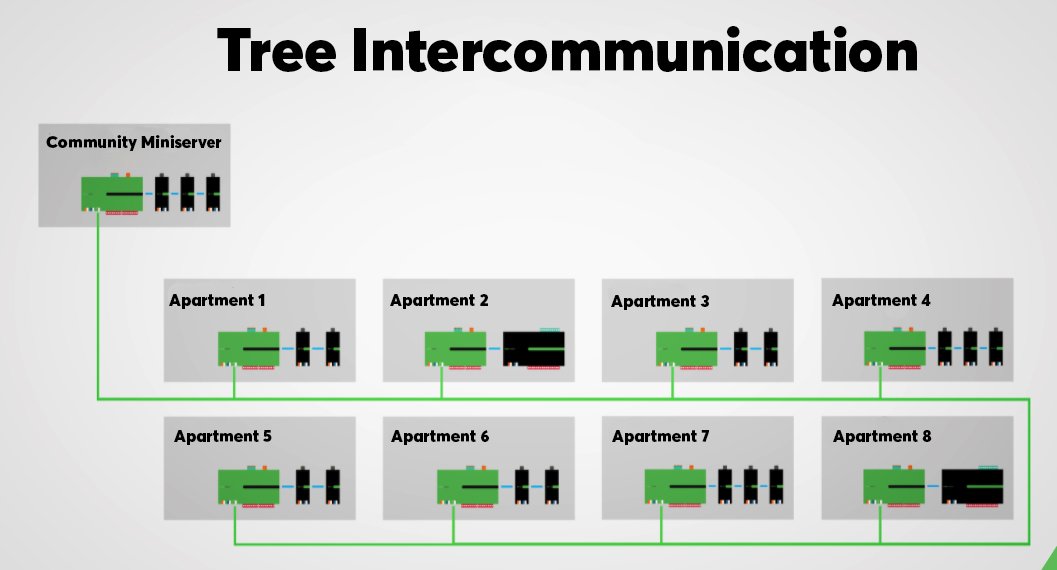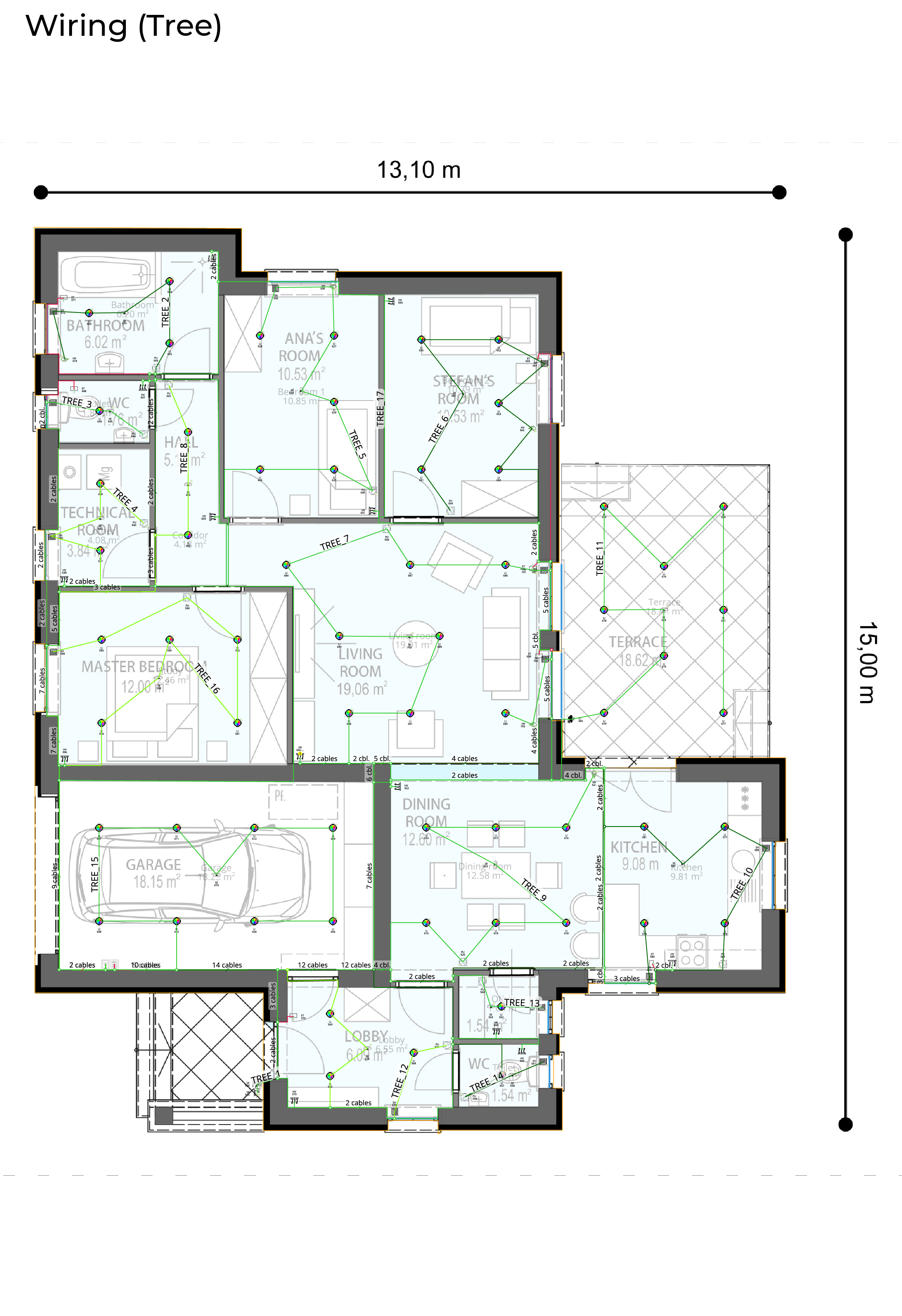Loxone Cabling & Wiring Basics
Your home’s wiring is like the human nervous system; without it, your home automation system can’t sense or take action. In contrast to nature’s thousands of years of refining its signaling system, home automation has only been around for a few decades.
As a result of this ever-expanding field, you should prepare your setup for the long term. While it’s simple to swap out individual components of an automation system like a motion detector, a switch, or a light fixture, the wiring is a different story.
For this reason, we advise using proven reliable cables for many years.
A Loxone system typically employs four different kinds of cables:
- Tree Cable
- CAT7
- Mains Cable
- Speaker Cable
In this post, you will learn the fundamentals of how to wire a Loxone system.
Introduction to Wiring Topology

As the “panel” housing the Loxone devices is typically placed in the system’s geographic center, it serves as the installation’s nerve center.
For example, switched lighting circuits and 230V dimmable lighting circuits are centrally wired in a STAR pattern, with individual cables leading back to a junction box.
The Loxone Tree technology, in conjunction with the Tree cable, can be used to wire sensors, switches, and even heating actuators. It allows for more efficient and adaptable wiring.
You can link any Tree device to any other Tree device to gain access to its management and communication features. All Tree devices will be online once this “network” is reconnected to the Tree Extension.
There is a significant potential for future upgrades and update freedom while reducing cabling by as much as 80% compared to conventional STAR wired systems.
That allows you to future-proof your Smart Home system.
Also, you are not limited to using The Loxone Touch and
Touch Pure switches to perform multiple functions. As long as the switch can be wired into the system and provides a contact closure, it can perform any number of actions in the system’s software. We advise using retractive switches because of the variety of clicks, double clicks, etc.
The Tree Extension and the Miniserver Tree connection of the second generation serve as the basis for the Tree buses. The former allows for the connection of 50 devices on each branch (the left and right), and the latter supports a maximum of 50 devices.

The Tree Line (cable) can only be up to 500 meters long. Only the green-and-white-marked Tree communication branch needs to be this long; the orange-and-white-marked 24 V power supply can be shorter than that, as long as we consider the distance, the cable cross-section, the voltage drop, and the number of tree devices.
Except for the fact that the cable can’t form a loop if it goes in a circle, the topology is open to any configuration.
Recommended Cables
With their two color-coded, twisted pairs of 0.6 mm2 cross-section and one pair of 1.5 mm2 cross-section, Loxone Tree cable and Loxone PVC Tree cable are the best options for supplying 24 V to Loxone luminaires.
Clear color coding helps reduce the number of potential points of failure in the wiring, such as the ends and the connections. That can drastically shorten the period required for the installation’s commissioning process.
Although CAT7 cables’ high data transfer rate and future-proof flexibility are attractive features, that’s not why we’re switching to them. We highly recommend CAT7 wires because of their superior shielding for all data transmissions within a Loxone smart home.

Different data and power signals can be sent down separate pairs of a CAT7 cable’s shielding, reducing the likelihood of interference that would otherwise occur. That has the additional benefit of shielding the data signals from any potential interference from electromagnetic fields during times of peak EMI.
In addition to shielding and high data rates, thanks to the AWG23 core thickness, you can also use this cable to supply power to devices over longer distances without experiencing excessive volt-drop.
In short, you should use CAT7 in all Loxone systems to ensure maximum functionality and readiness for the future.
About Tree Intercommunication
When multiple Miniservers are linked together through a Tree interface, they can communicate and share information in various forms (digital, analog, and textual) using Tree Intercommunication.
The devices are linked together using either the Tree interface provided by the Miniserver or a Tree branch provided by the Tree Extension.
No other Tree devices can be connected to a branch used for Intercommunication. Its sole function is to facilitate conversation between members of the same group.

In order for Tree Intercommunication to function, the network topology must be either linear or daisy-chained.
There must be a connection of GND in addition to the Tree data lines.
That allows for the connection and data exchange of as many as 50 Miniservers.
Before the end of October 2020, Loxone programmed a hard stop into every Tree Extension that went out the door. Two of these extensions are available for use in intercommunication and only at the terminals of the data lines.
Since October 2020, a new version of the Tree Extension has been shipped, equipped with a switchable termination, thus allowing up to 50 devices.
How uPlan Works With Loxone
Use our automatic planning tool to economize your time spent on preparation. Upload your project’s layout, indicate where rooms and walls are located, and our uPlan Wizard will do the rest, automatically positioning all necessary Loxone devices.
Integrating lighting, shading, audio, HVAC, and security only takes a click. It’s simple to make changes by hand and develop a unique setup.
What used to take days or weeks to complete can now be done in seconds by downloading the electrical plan and viewing the detailed wiring diagram of the project you created, complete with all the elements and devices that were automatically generated.
The wiring diagram will be updated in real-time to reflect the new configuration if the layout is updated.
The electrical cabinet wiring diagram for Loxone systems was also released in February. The link to a free example project is below.
